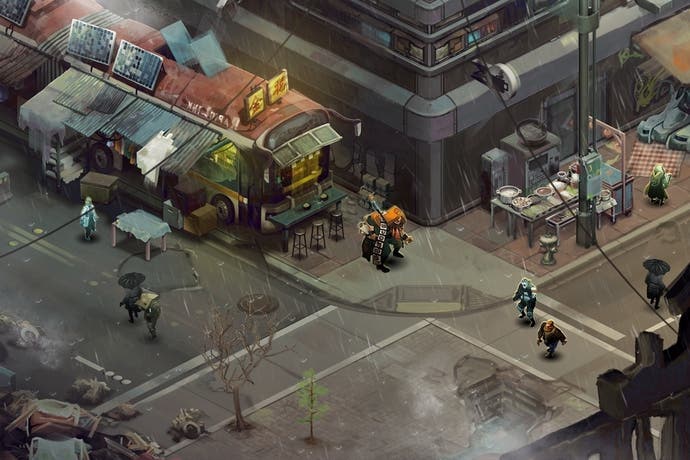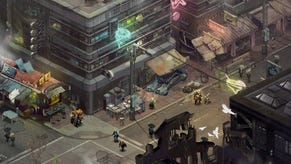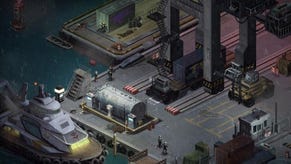Shadowrun Returns review
Hack to the future.
Slapping the word "Returns" on the end of a sequel often seems a little redundant. In the case of Shadowrun, however, it's perfectly appropriate. For fans who waited over 10 years for a follow-up to the classic 16-bit cyberpunk RPG, only to be given a multiplayer first-person shooter in 2007, the implication is not just that Shadowrun is back, but that it's back as it was meant to be.
Shadowrun Returns serves as sequel, reboot and homage all in one. It's a game that acknowledges the storylines of the previous games - both the SNES and Megadrive versions were completely different - while broadening its scope. Familiar gameplay systems also return, subtly evolved by modern design thinking.
This is a game made for the faithful, then, which means newcomers have some catching up to do. Fortunately the game is nimble in avoiding stodgy exposition, allowing the curious wrinkles of its genre-blending world to fall out naturally.
The setting is dystopian cyberpunk, a future version of Earth where once-familiar cities have been decimated by conflict and fallen into disarray. Glowing neon slums sprawl across America, populated by a bizarre and dangerous mixture of gangsters, thugs, hackers and shamen. Shamen? Yes, as well as technology the Shadowrun world also has magic - and it's here that the tropes of high fantasy bleed in.

Elves, trolls and dwarves walk alongside humans, each race with its own distinctive traits and all vulnerable to the same vices. Junkies now get high off BTL chips, sensory recordings that offer "better than life" experiences, ranging from the sleazy to the sadistic. Inevitably, a third genre gets stirred into the stew: hard-boiled detective noir.
"This time you get to create your own character, selecting from various races and classes."
It's a concoction that really shouldn't work, yet everything fits together perfectly. This is largely due to the matter-of-fact way such elements are introduced. The social and cultural rules that bind Shadowrun's disparate pieces together are all internally coherent and thoroughly fleshed out, so the fact that spellcasting elves and brainwired punks don't usually share the same stories becomes irrelevant.
Unlike the original Shadowrun video games, this time you get to create your own character, selecting from various races and classes. You can opt for a traditional guns or melee style, or choose one of the more specialised alternatives. Deckers can hack into systems, opening new areas and overwhelming robot enemies. Riggers use repurposed attack drones in battle. Each one plays very differently, making this the sort of game where you want to try multiple playthroughs with new character builds.
Progression is achieved through karma, though points now seem to be awarded more in line with the actual Buddhist concept. In the early games, karma was handed out for kills and domination in battle. Now, you're more likely to gain upgrades by helping out your fellow lowlifes in the slums - retrieving blankets for the homeless, rescuing hapless young men from brutal torture, and so on.
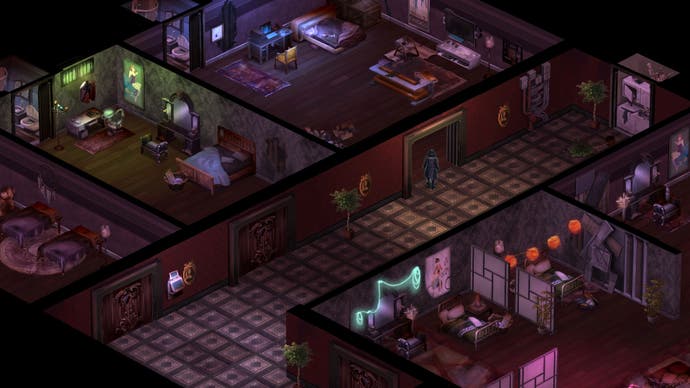
This inevitably reduces your options when it comes to how you choose to present your character - there are colder, more ruthless dialogue options and you can skip optional objectives, but it's always clear that in doing so you miss out on useful stuff. Given the morally murky nature of Shadowrun's world, gently forcing the player to wear a white hat feels a little strange.
Upgrades are quickly earned, however, with each one costing the same points as the next desired level. So, improving your rifle skills from level four to level five requires five karma points, the next six and so on. Like much of Shadowrun Returns, it's effective and simple. This is not a game that wants to overwhelm the player with intricacies, preferring to make those intricacies easy to grasp, freeing the player's attention for the story.
It's here that Shadowrun Returns really soars. The initial campaign - Dead Man's Switch - is superbly written, a canny balancing act between world-building backstory, instantly memorable characters and a murder mystery plot that keeps the twists and turns coming at an agreeable clip.
Gameplay divides into two styles. The first is more point-and-click adventure, as you wander some reasonably large and open environments, talking to people (and non-people), finding items and generally progressing the plot. You're never doing much more than following an objective arrow and clicking on everything highlighted by an icon, but the writing is good enough that you never feel railroaded.
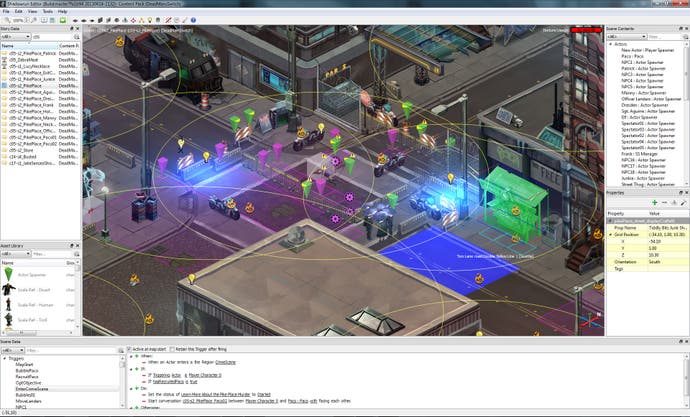
Things switch to a turn-based mode once enemies are encountered. Here, the expected payoff between movement and action comes into play, but as with character levelling, it's realised in a very streamlined fashion. You start with just two action points, which can be used for moving, attacking, reloading or using items. A clear illuminated area shows you how far you can move for one action point - the range is agreeably large - while moving the mouse beyond that boundary shows how far you can get if you expend two action points and so on.
You can scroll through your combat options quickly and easily, and the game is generous with its lines of sight. Perhaps too generous, since this is not a difficult game. It may resemble XCOM during its more tactical moments, but it lacks that game's ruthless brutality. You'll need to make some pretty horrendous mistakes to fail most of the encounters here.
This is a game that slips down easily, its story broken up into short and mostly linear sections that can be played in a lunch break. If at the end of a battle the story demands that you return to the sleazy bar that acts as your hub, then you'll be returned there. There's no real chance to wander off and find your own way, but then there's no real reason to anyway. This was never an openworld series, and it's to the game's credit that it has retained its grip on story above all else.
Stories are Shadowrun's selling point, and are also what makes it more than just a nostalgic rehash of former glories. The "Dead Man's Switch" quest that ships with the game is a delight, but it's also just the beginning. Shadowrun Returns also comes with an editor, through which fans can create their own content for the game, and construct their own campaigns. In doing so, the game reaches back beyond even the original SNES title and engages with the 1989 tabletop RPG that started it all.

The editor tool is robust but fairly complex. Certainly, it's not something that casual players will be able to fire up and tinker with without a lot of trial and error, but for those dedicated enough to become content creators the ability to become a remote dungeon master, spinning tales for others to enjoy, will be hard to resist.
"Judged purely as a standalone game, it's an unambiguous success."
For those who just want to relive the isometric action of the SNES and Megadrive days, Shadowrun Returns easily delivers. It's not the deepest or most flexible game of its type, but there's a lot to be said for simple ideas realised intuitively. Add in some excellent writing and, judged purely as a standalone game, it's an unambiguous success.
There's more to Shadowrun Returns though. Much more. And it won't be until the community gets its hands on the editor, starts remixing the current material and generating its own, that the game will really begin to blossom. When it does, the patience of the hardcore will be well rewarded.
